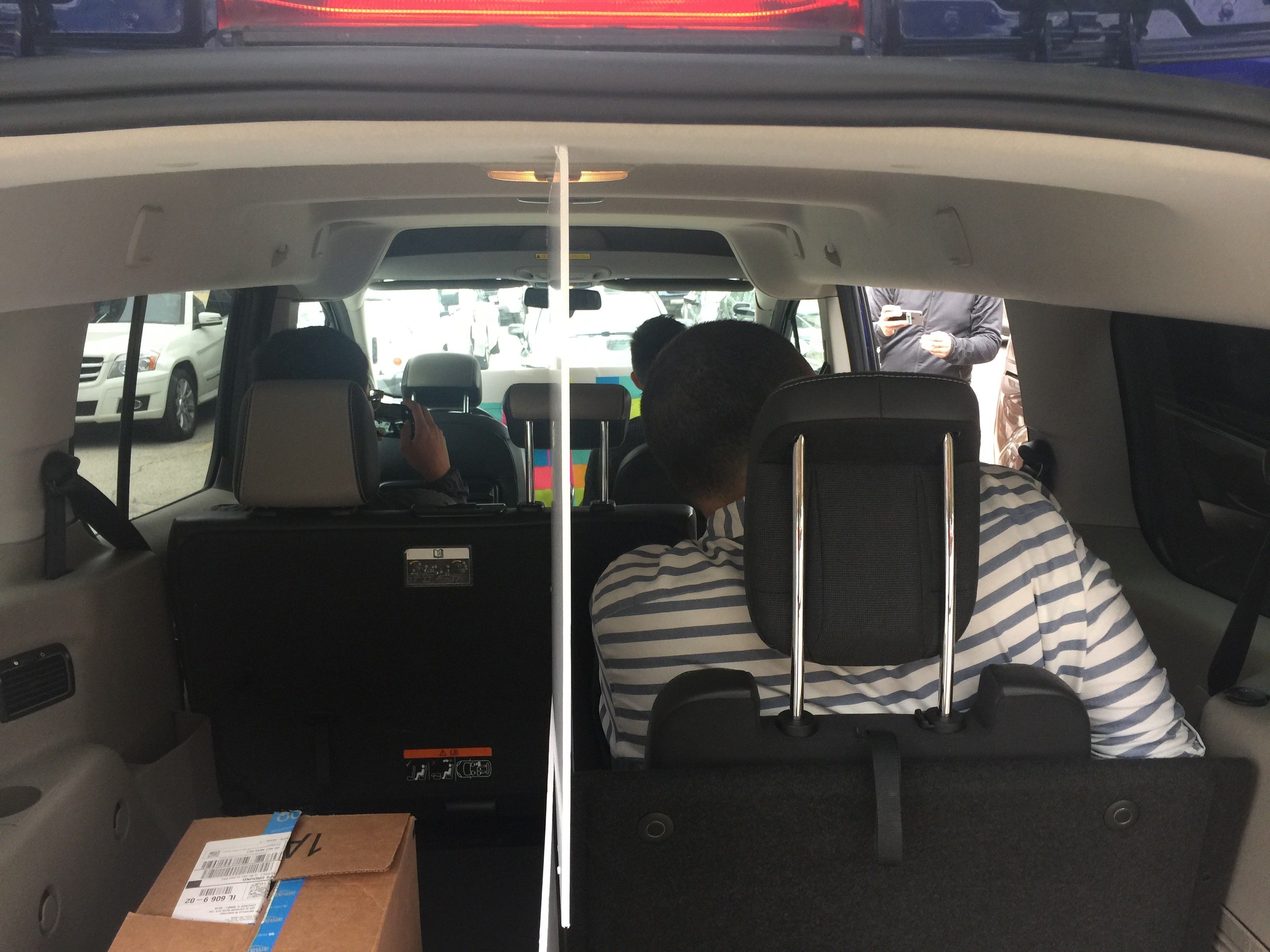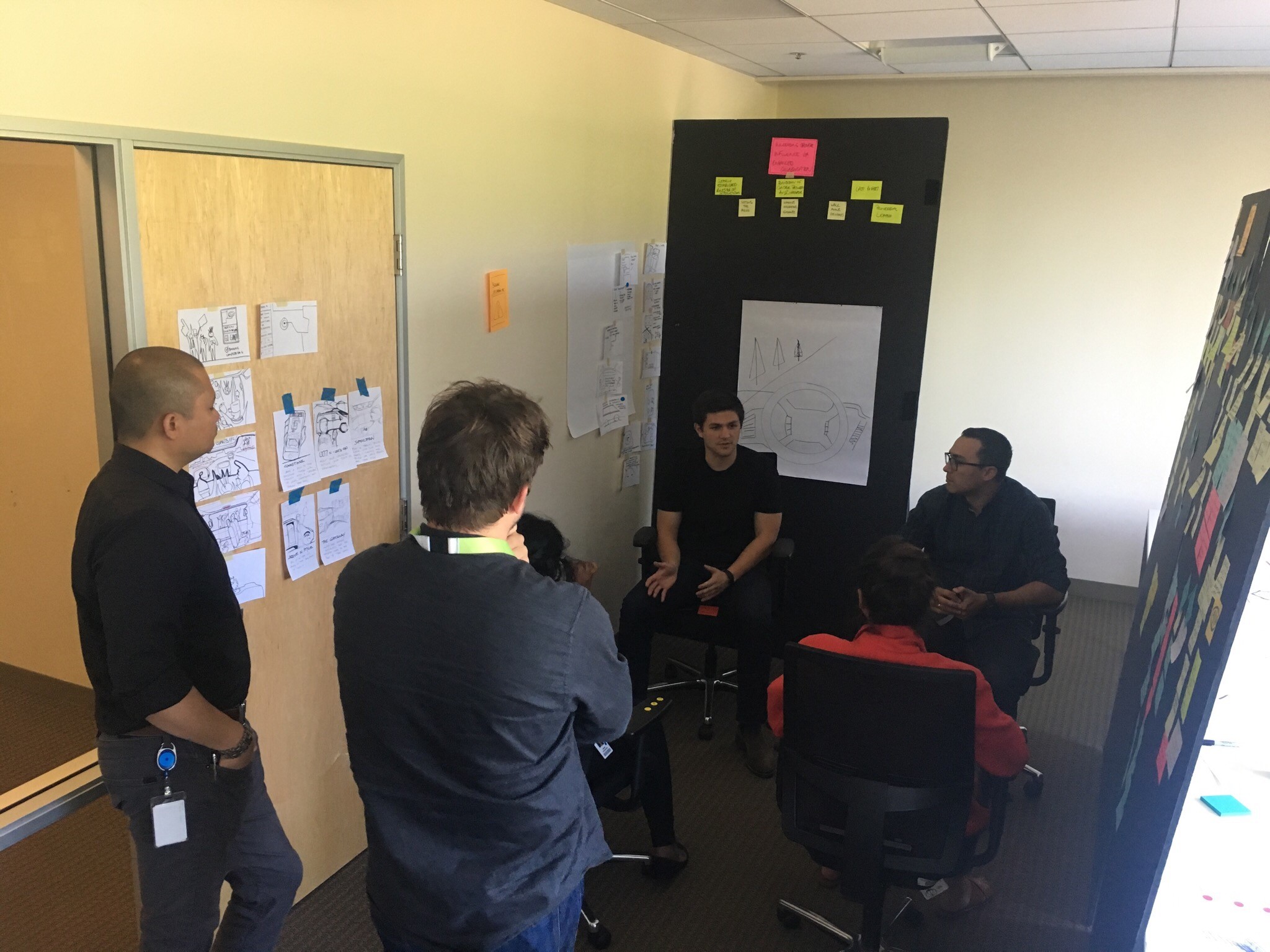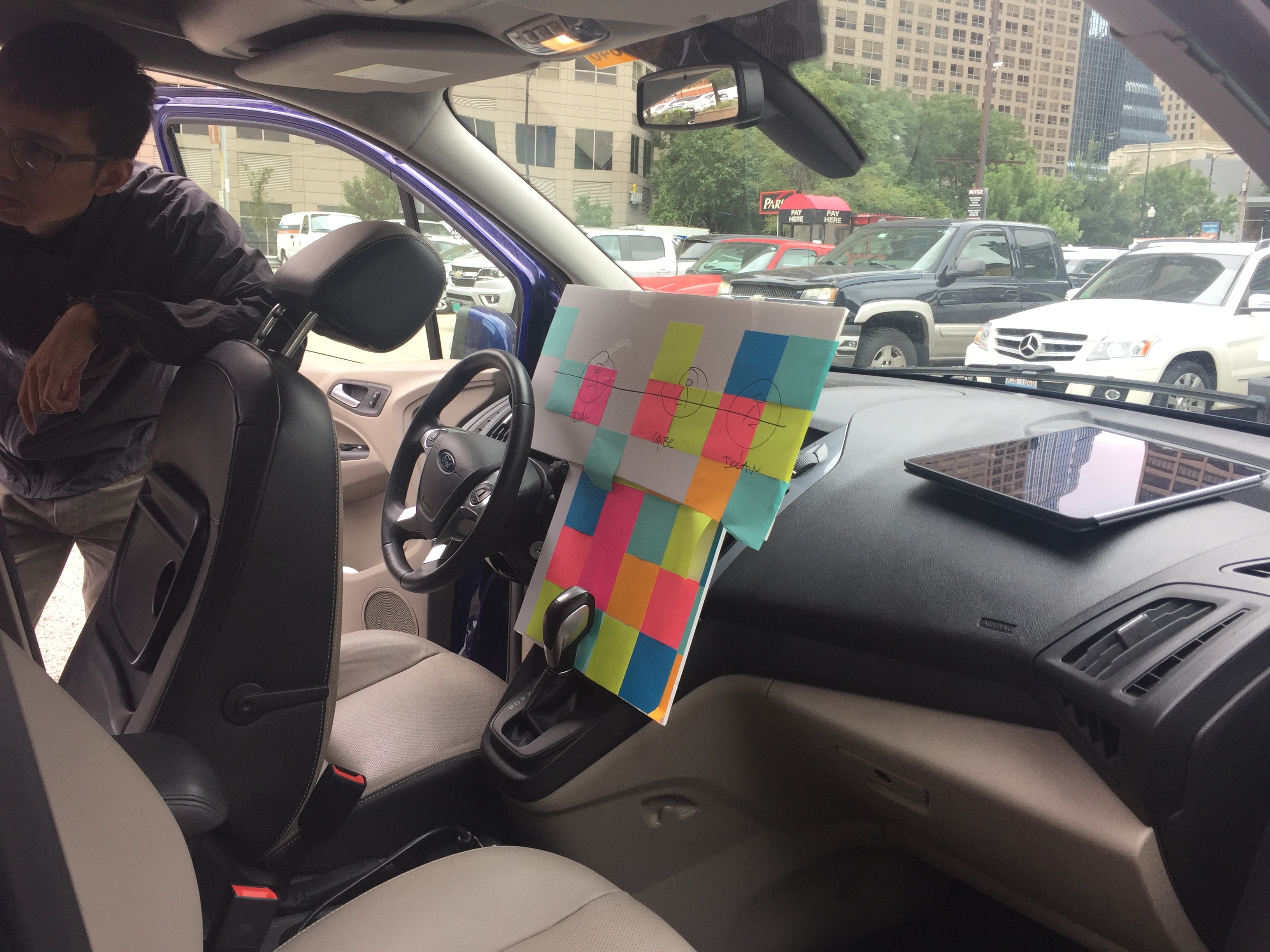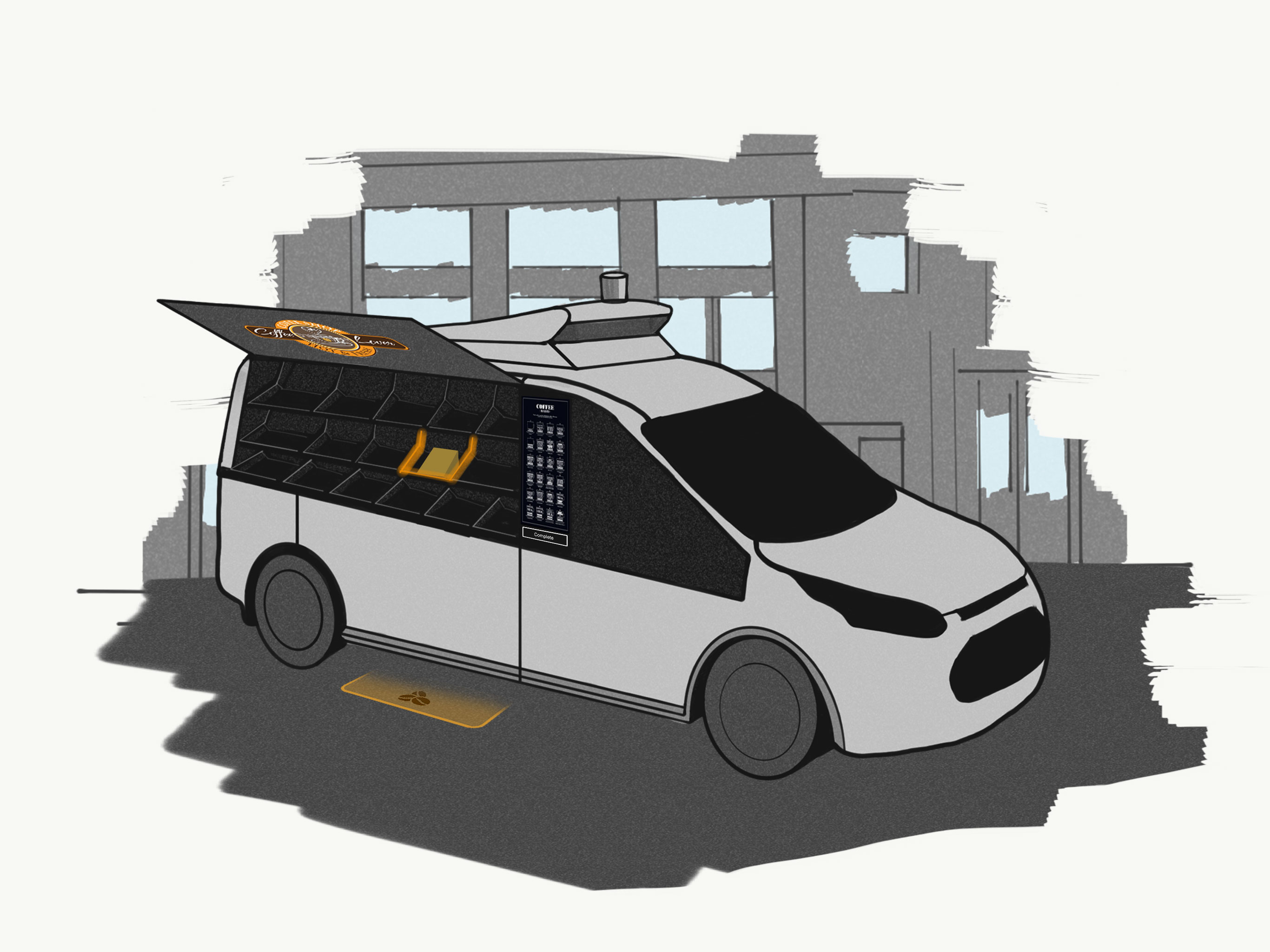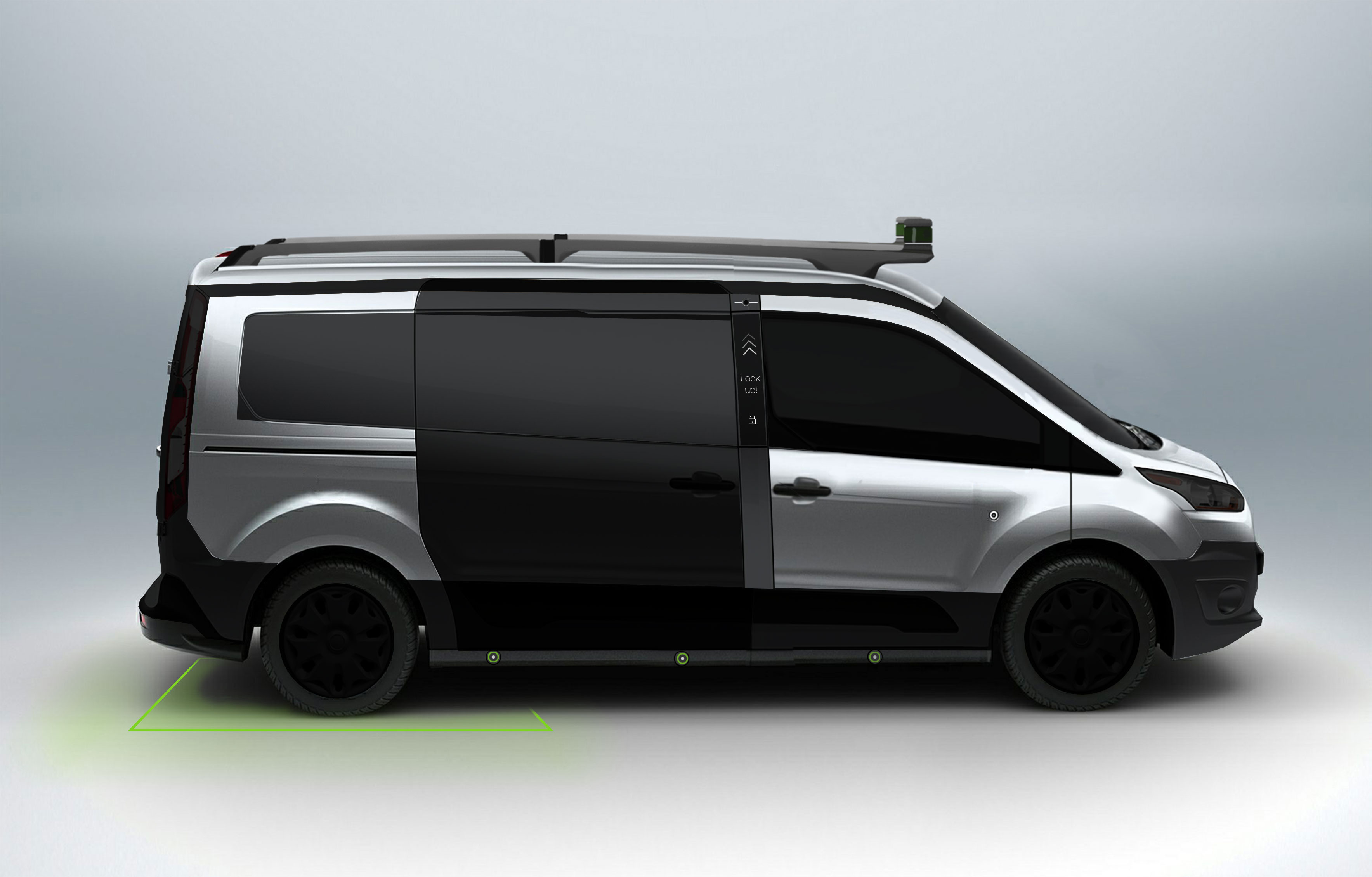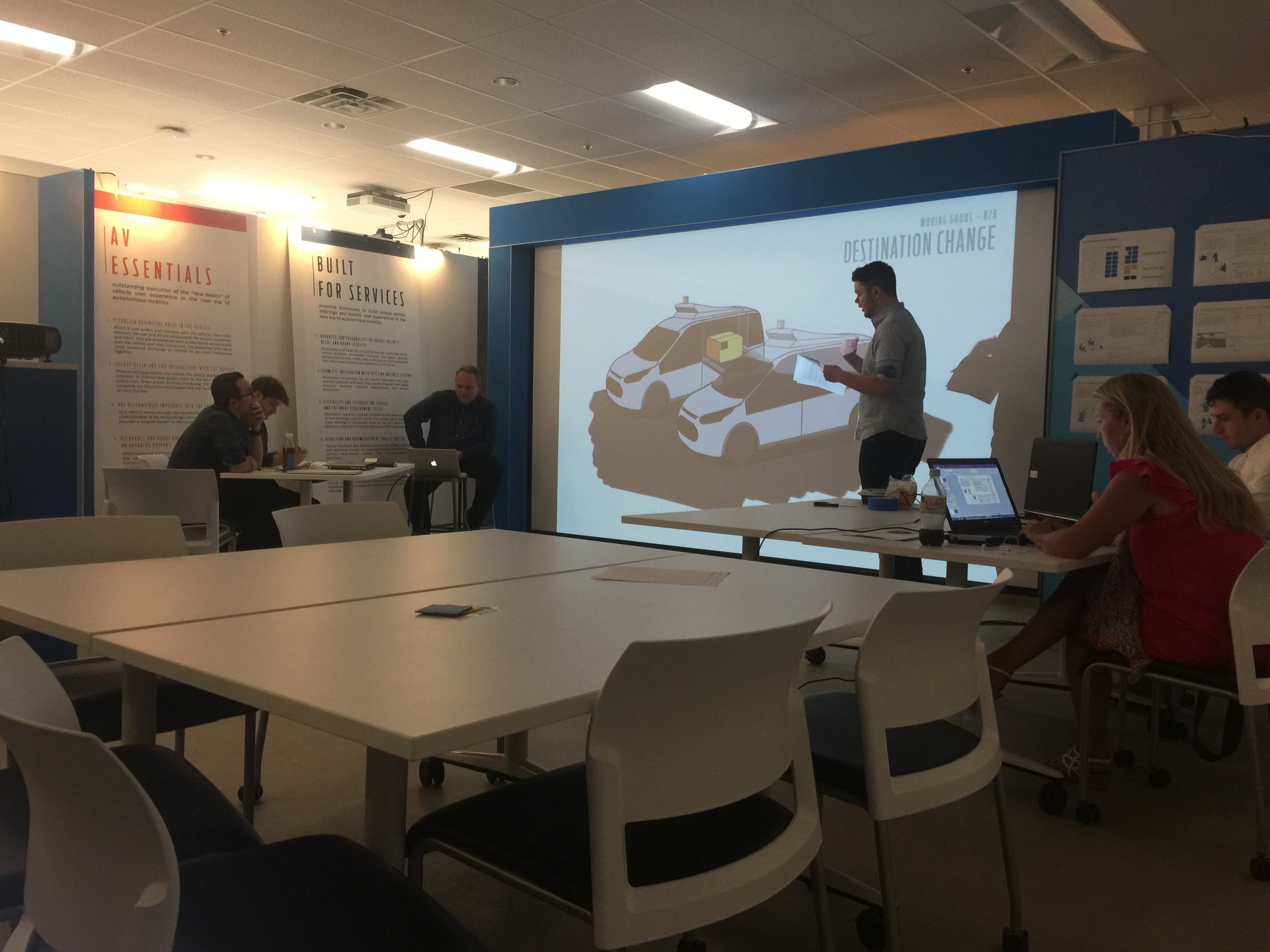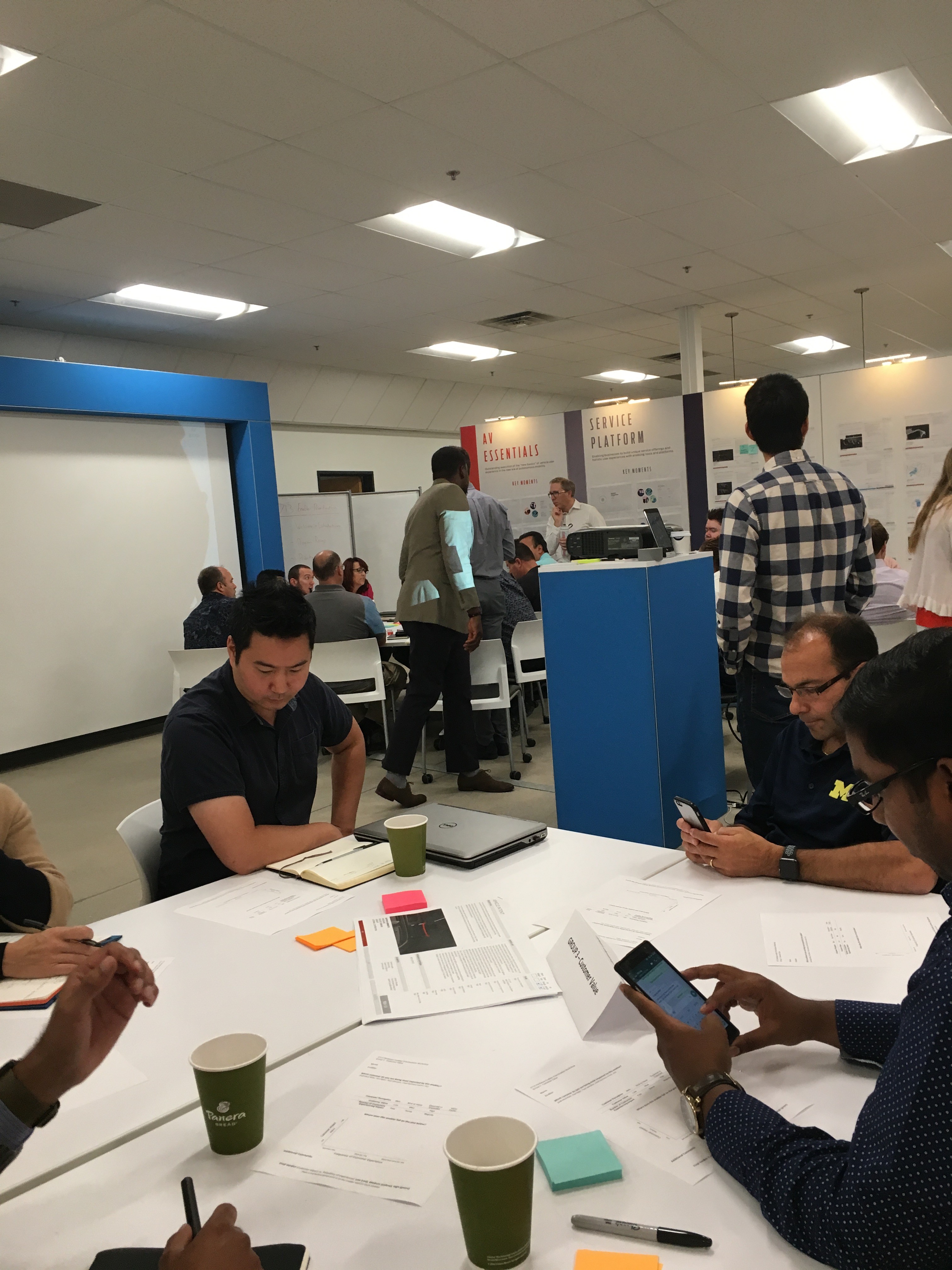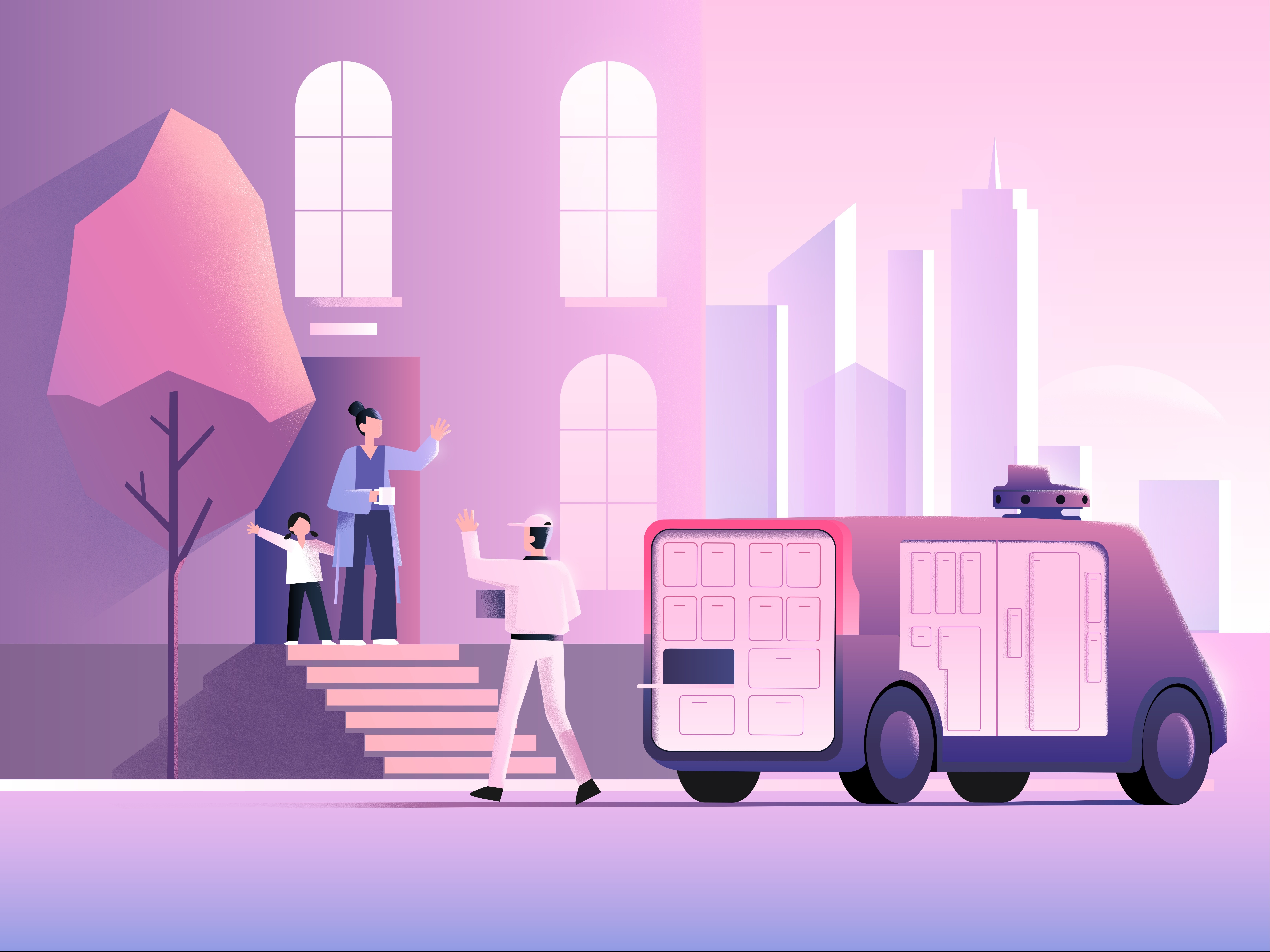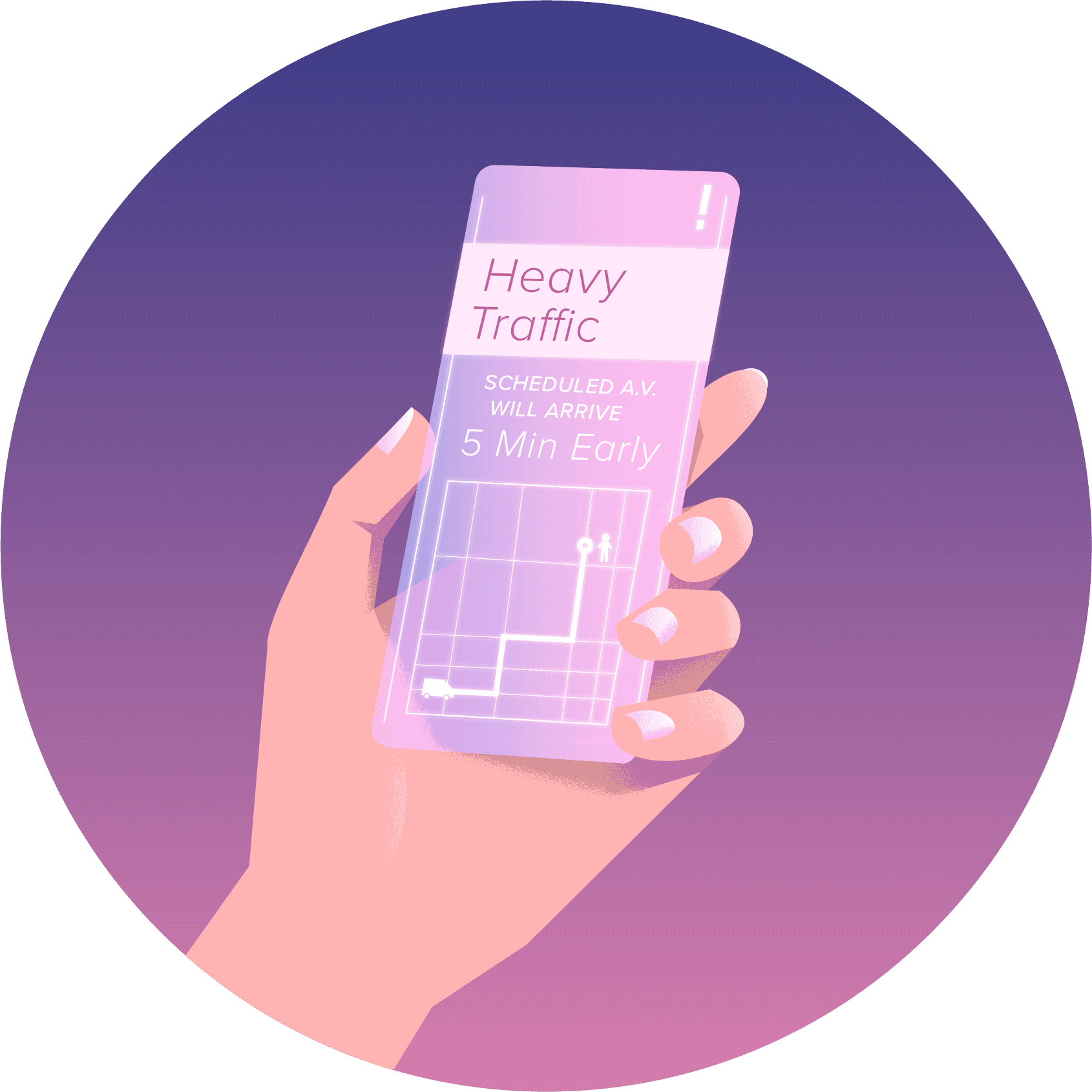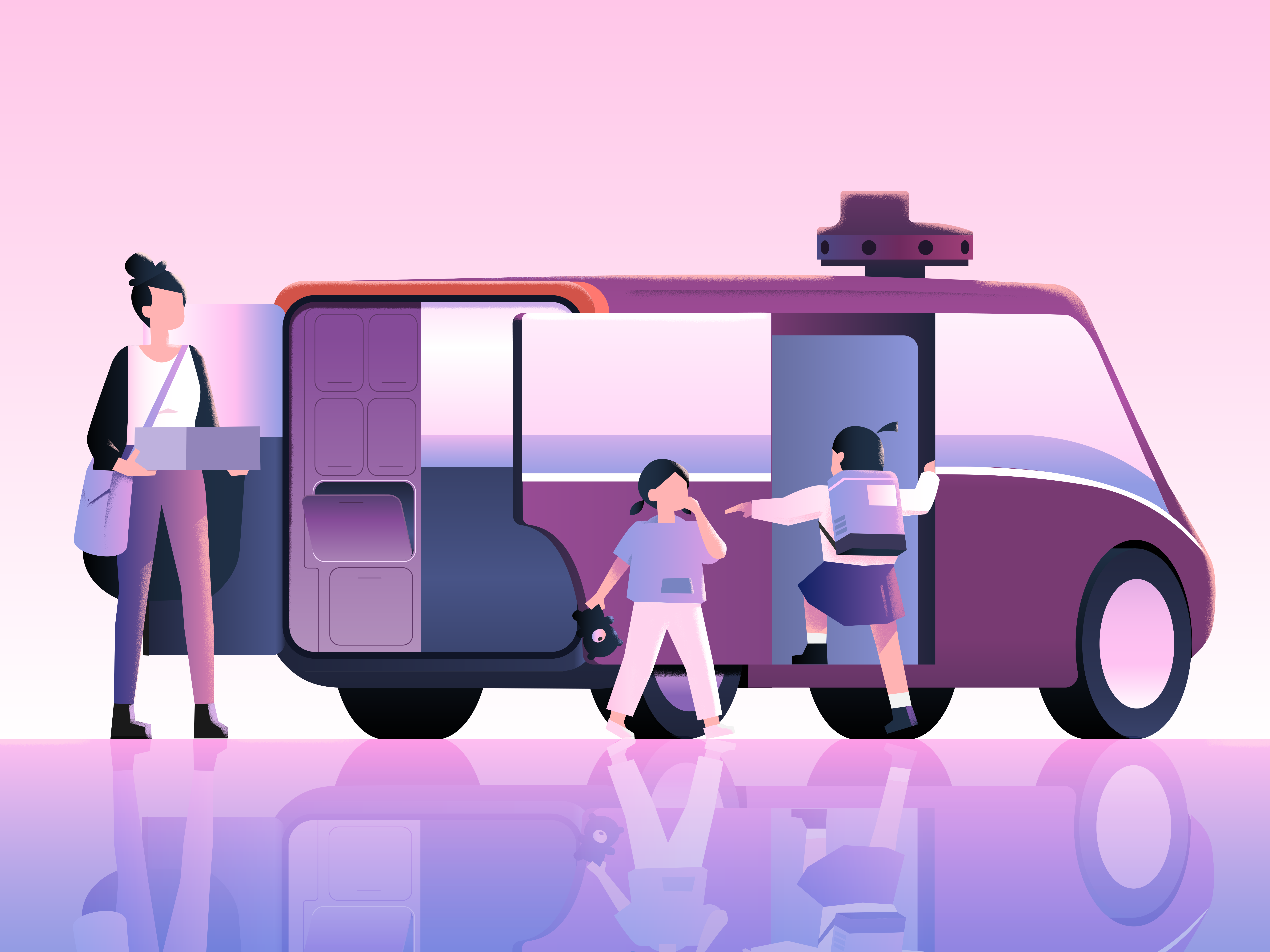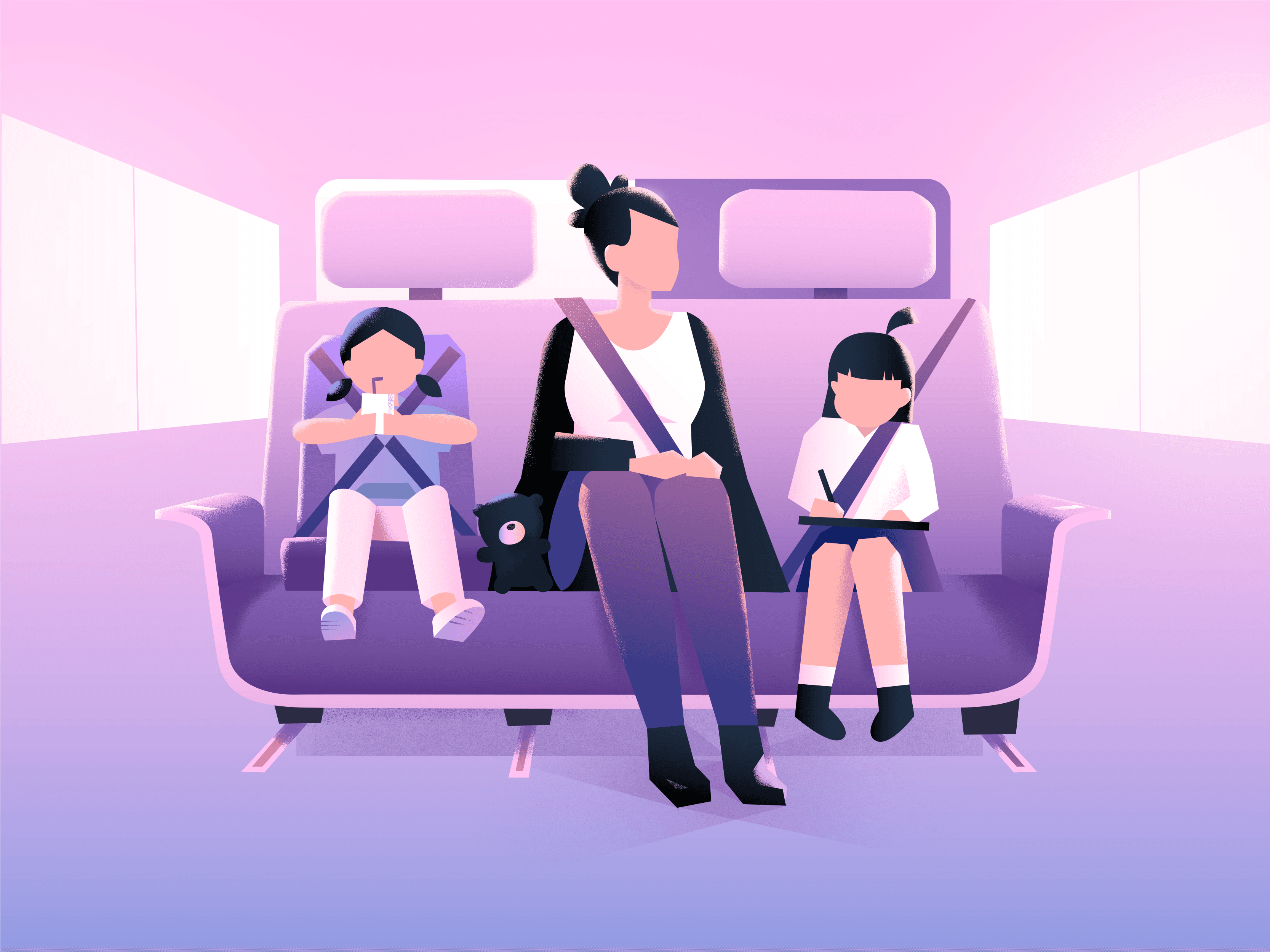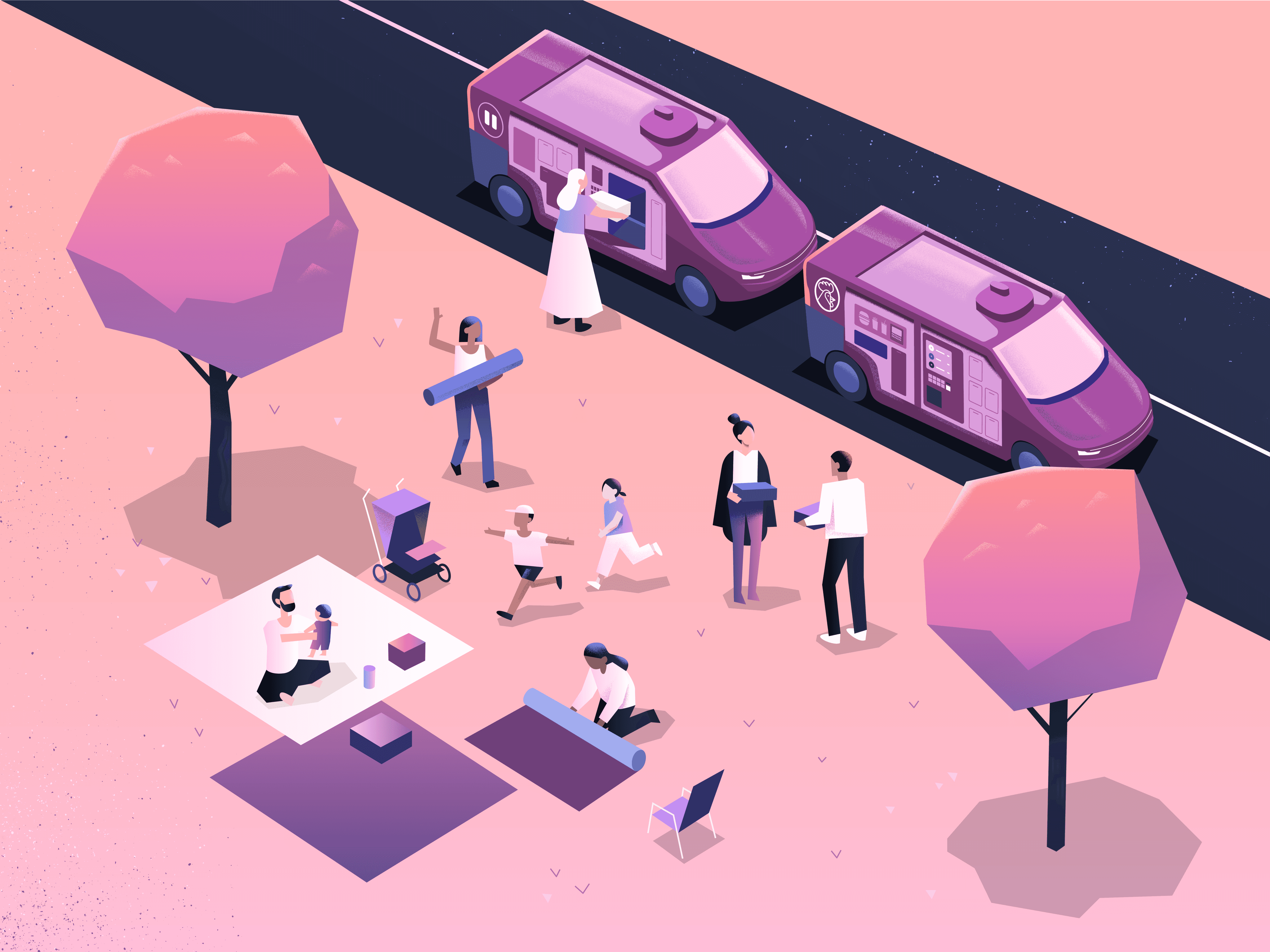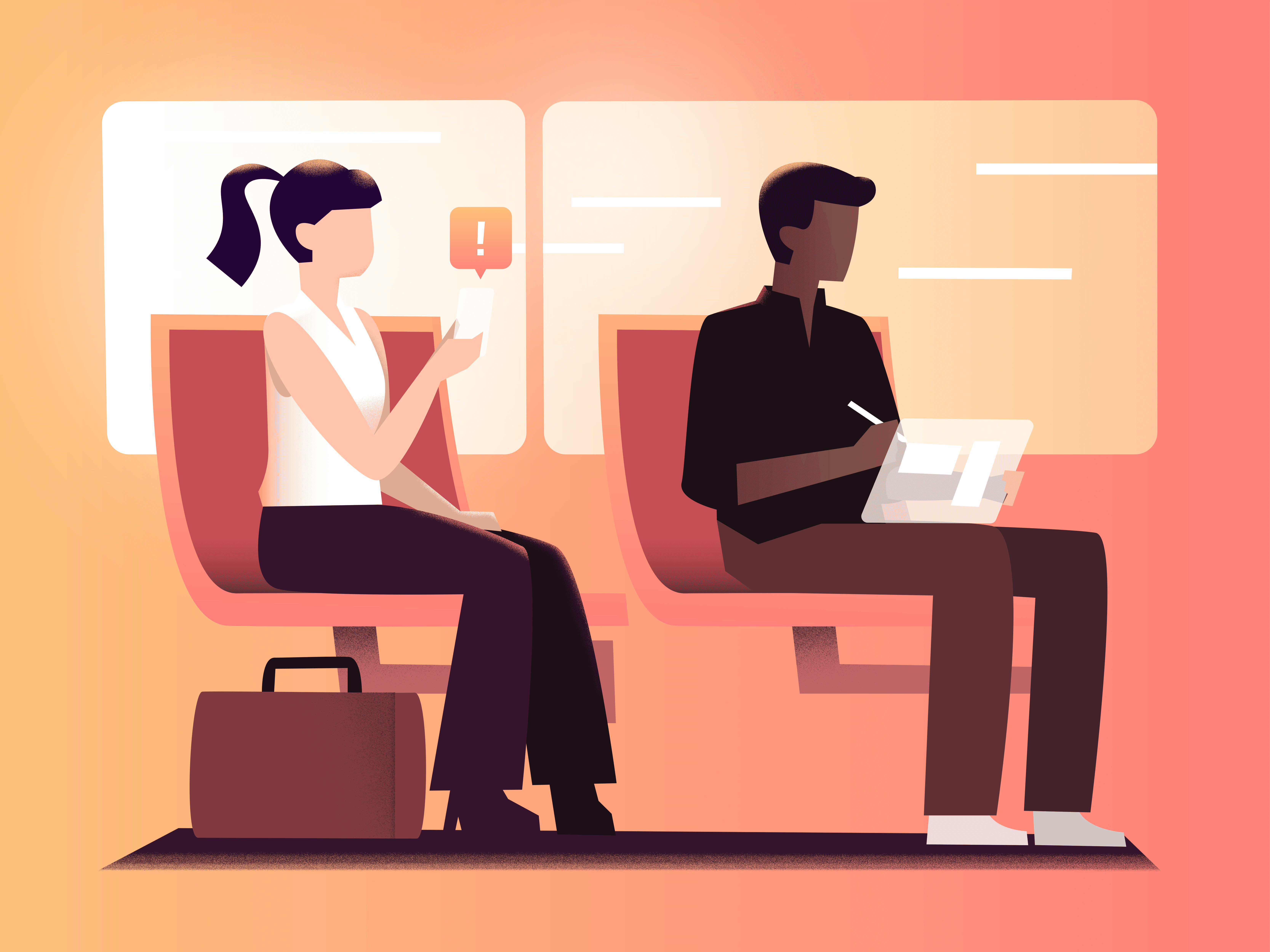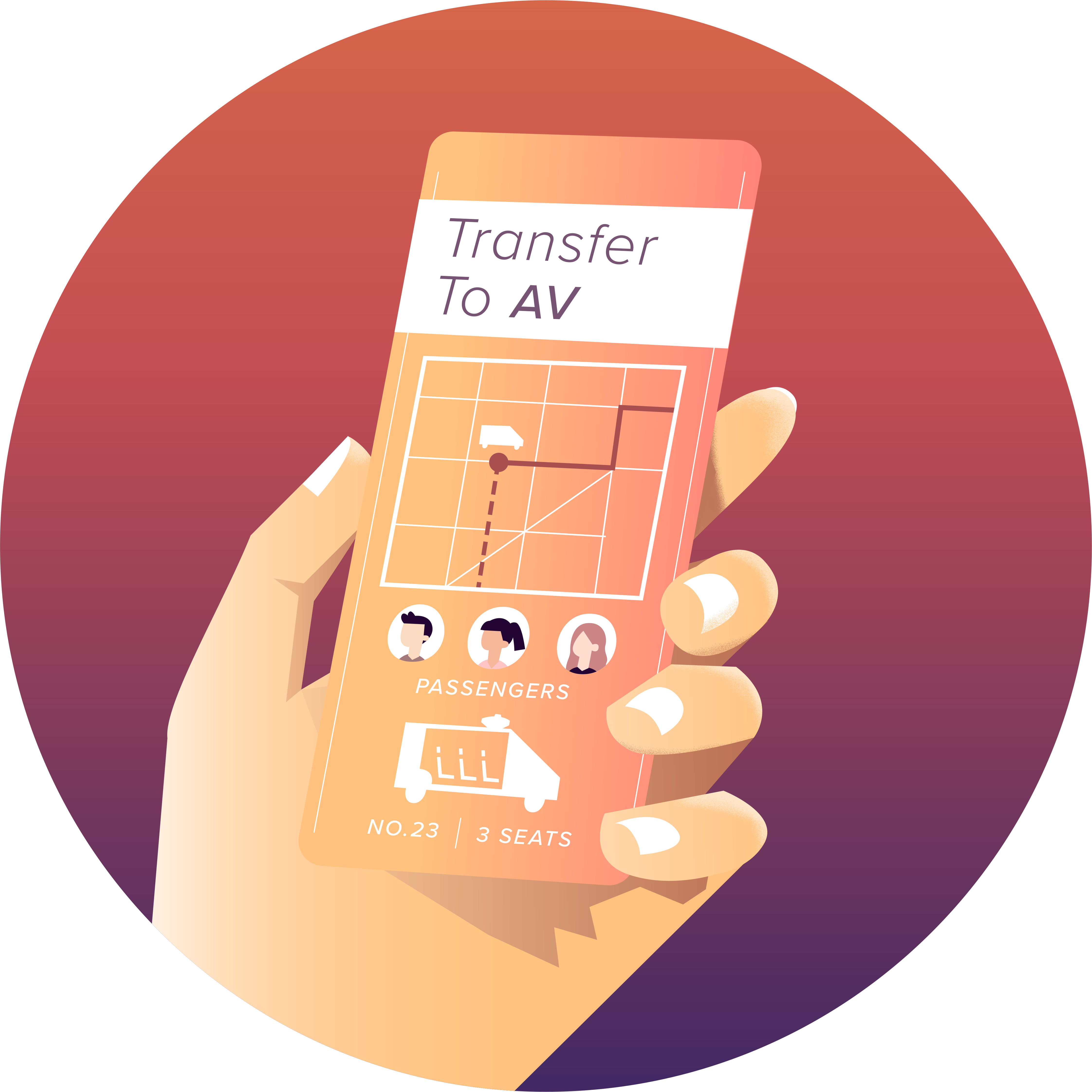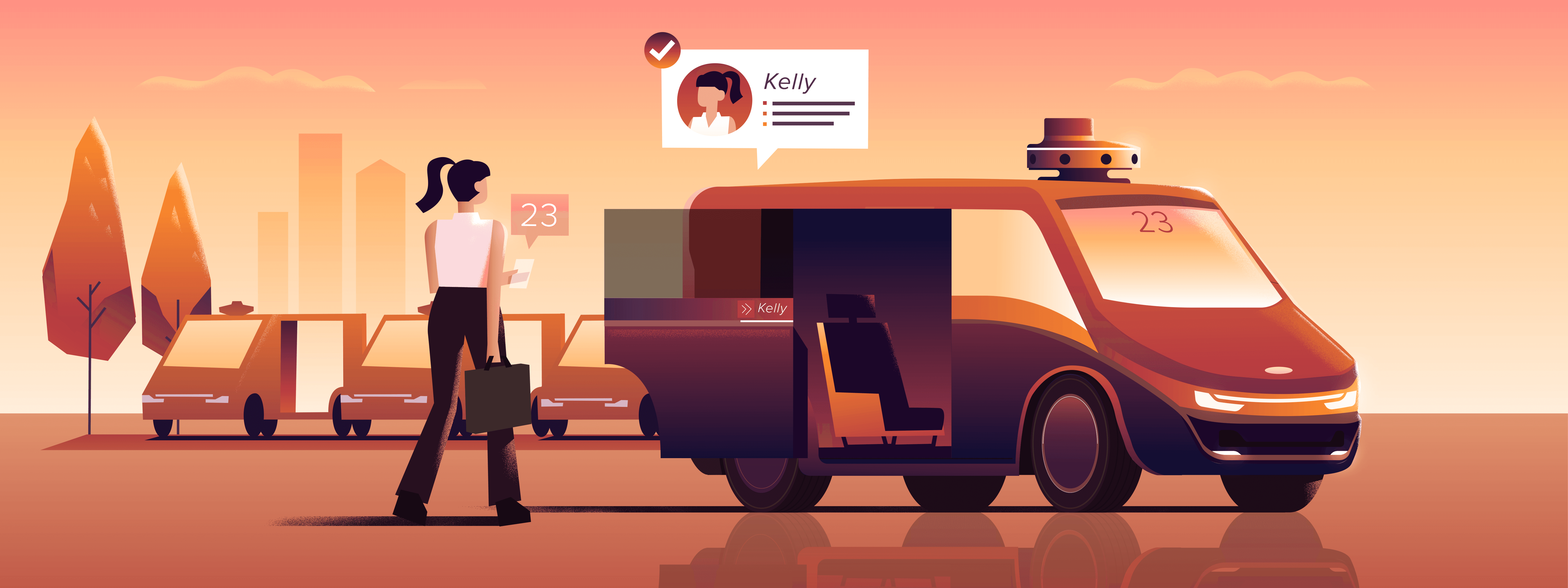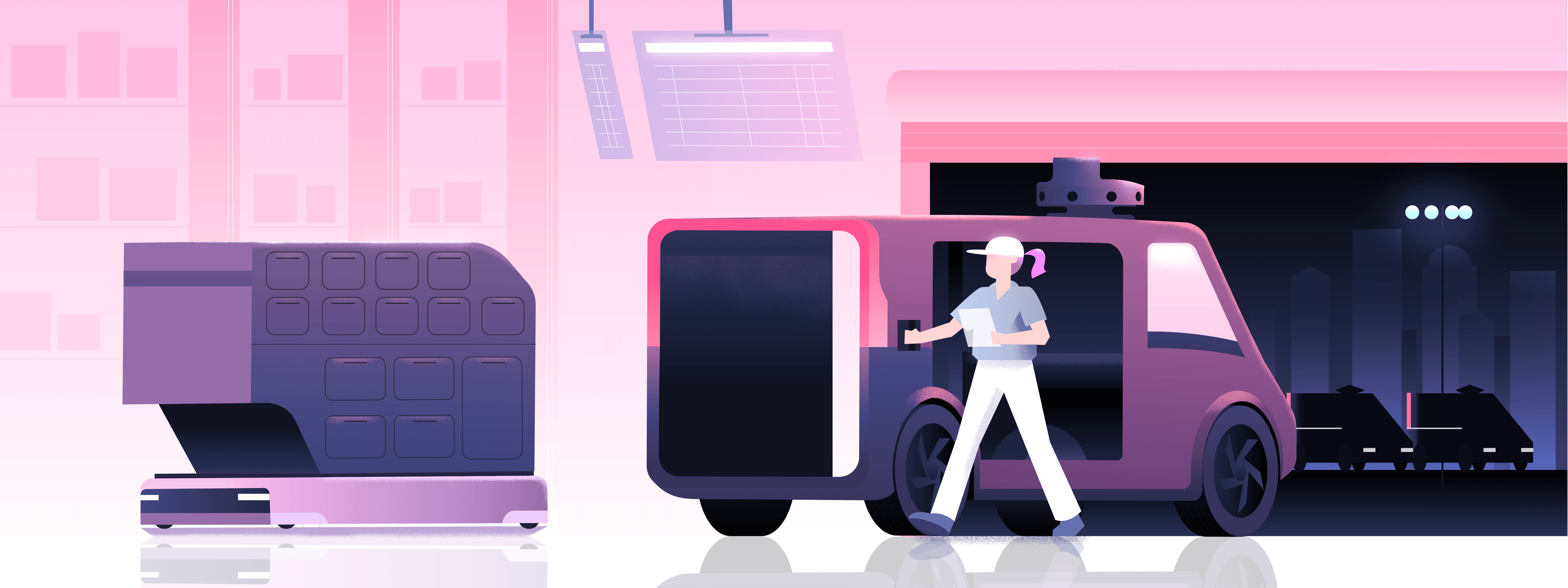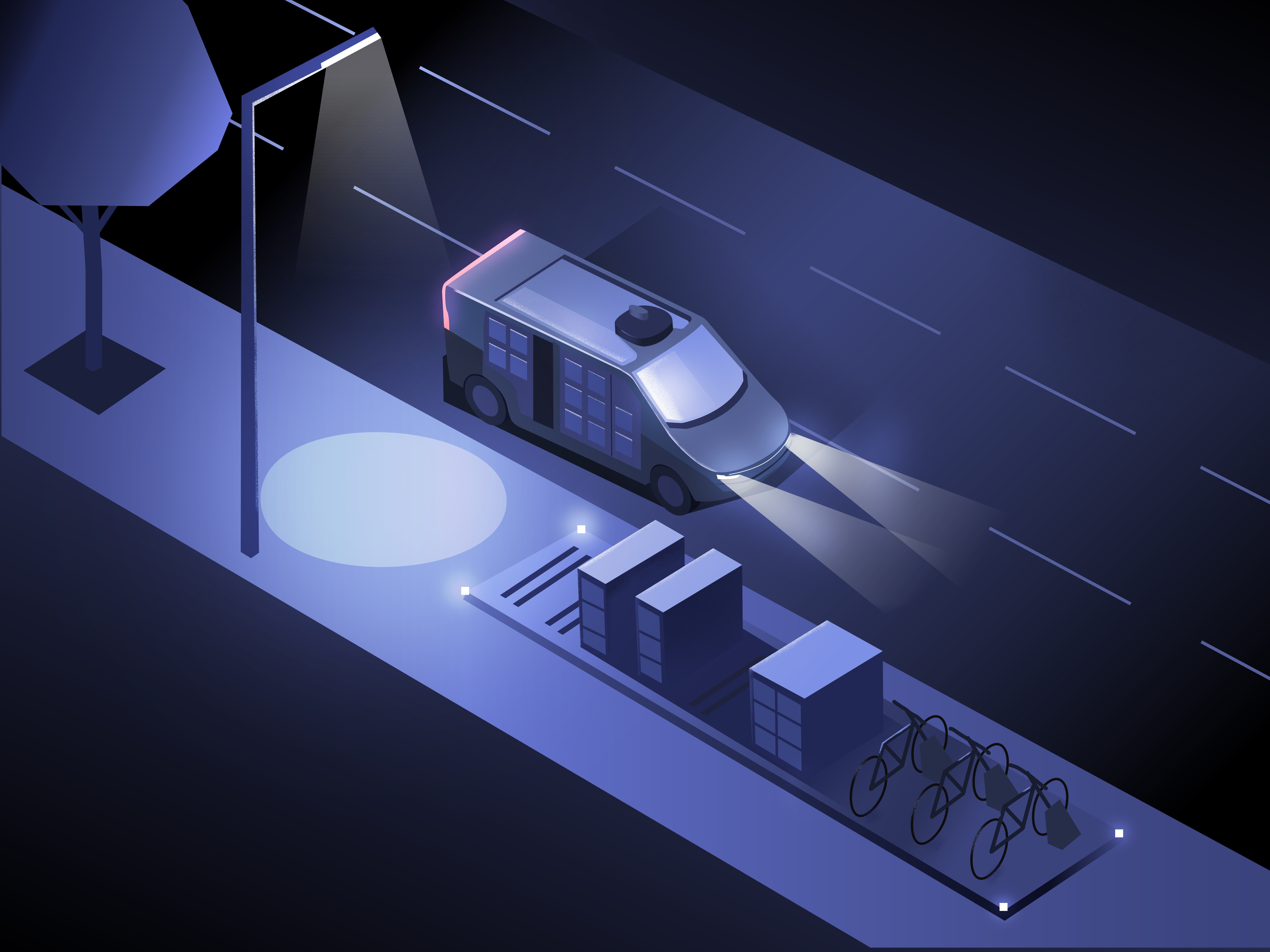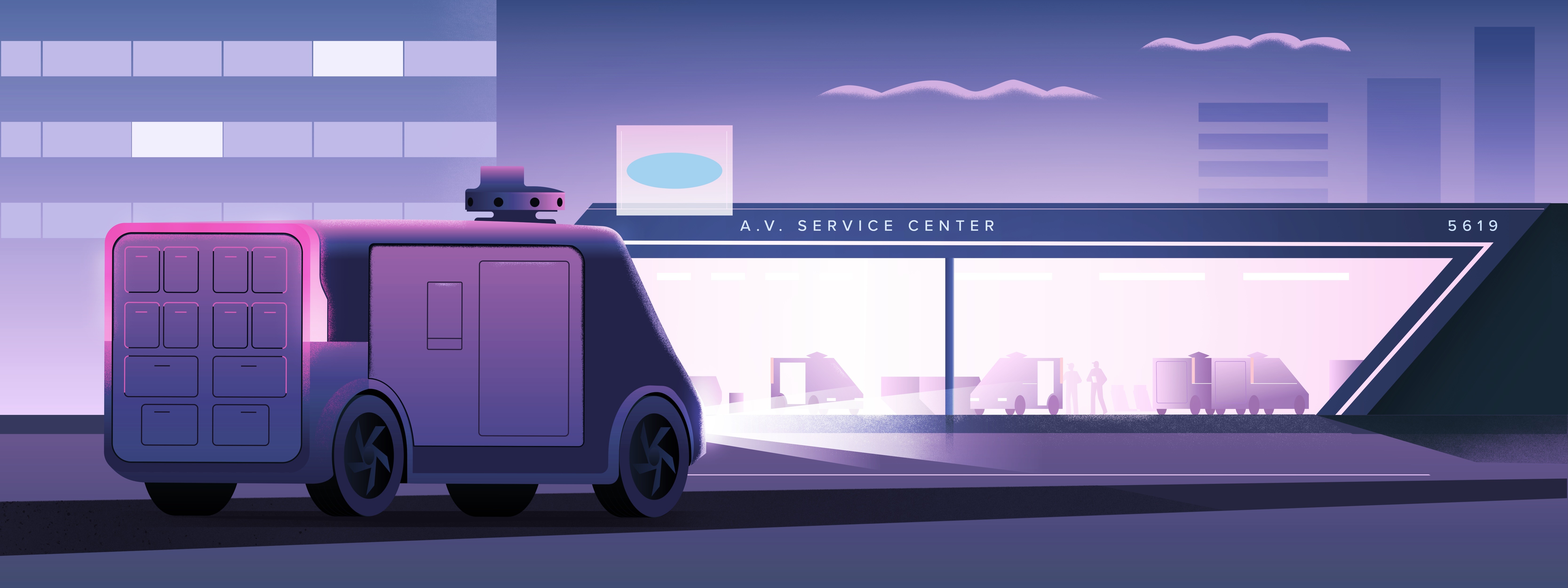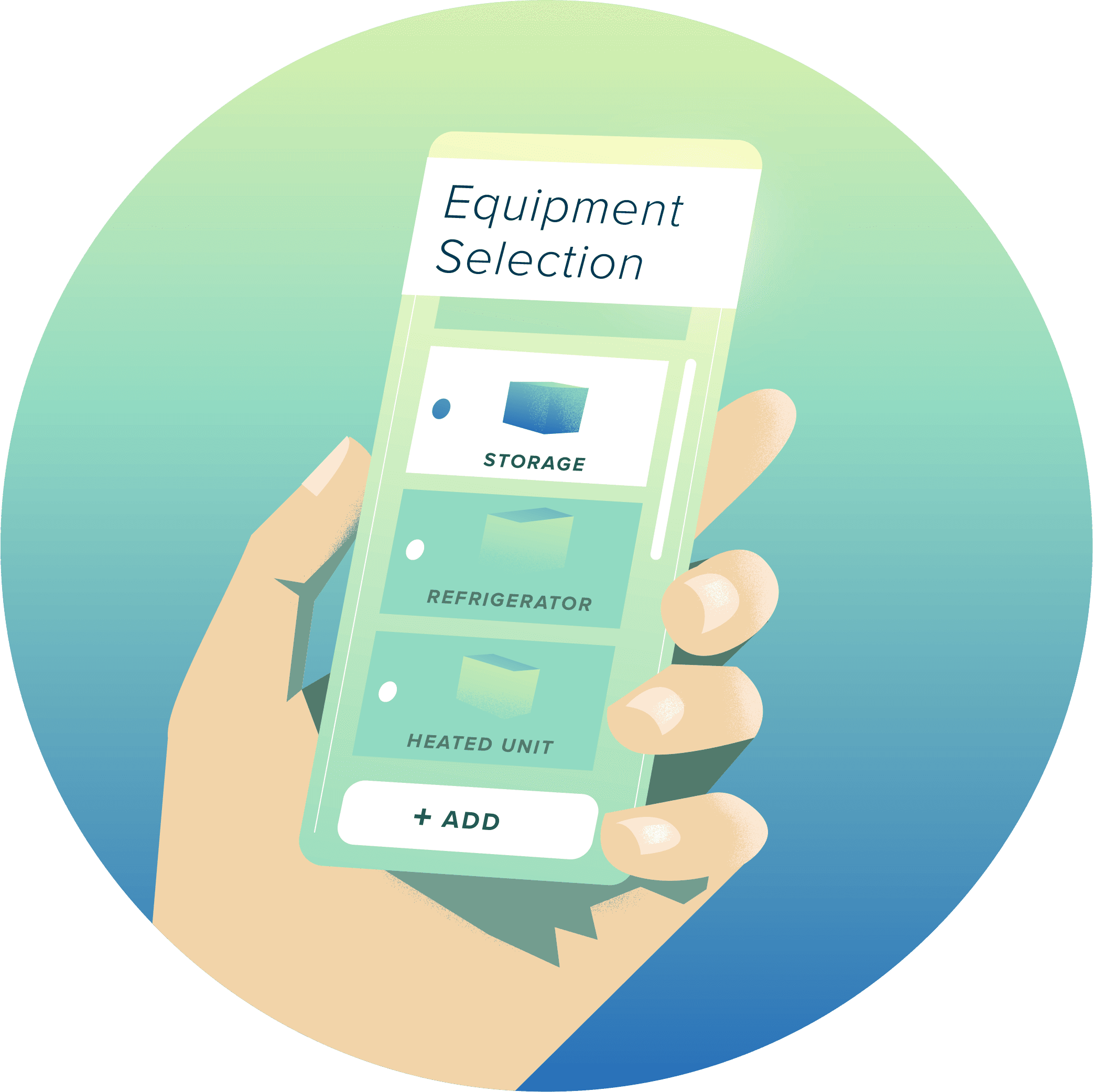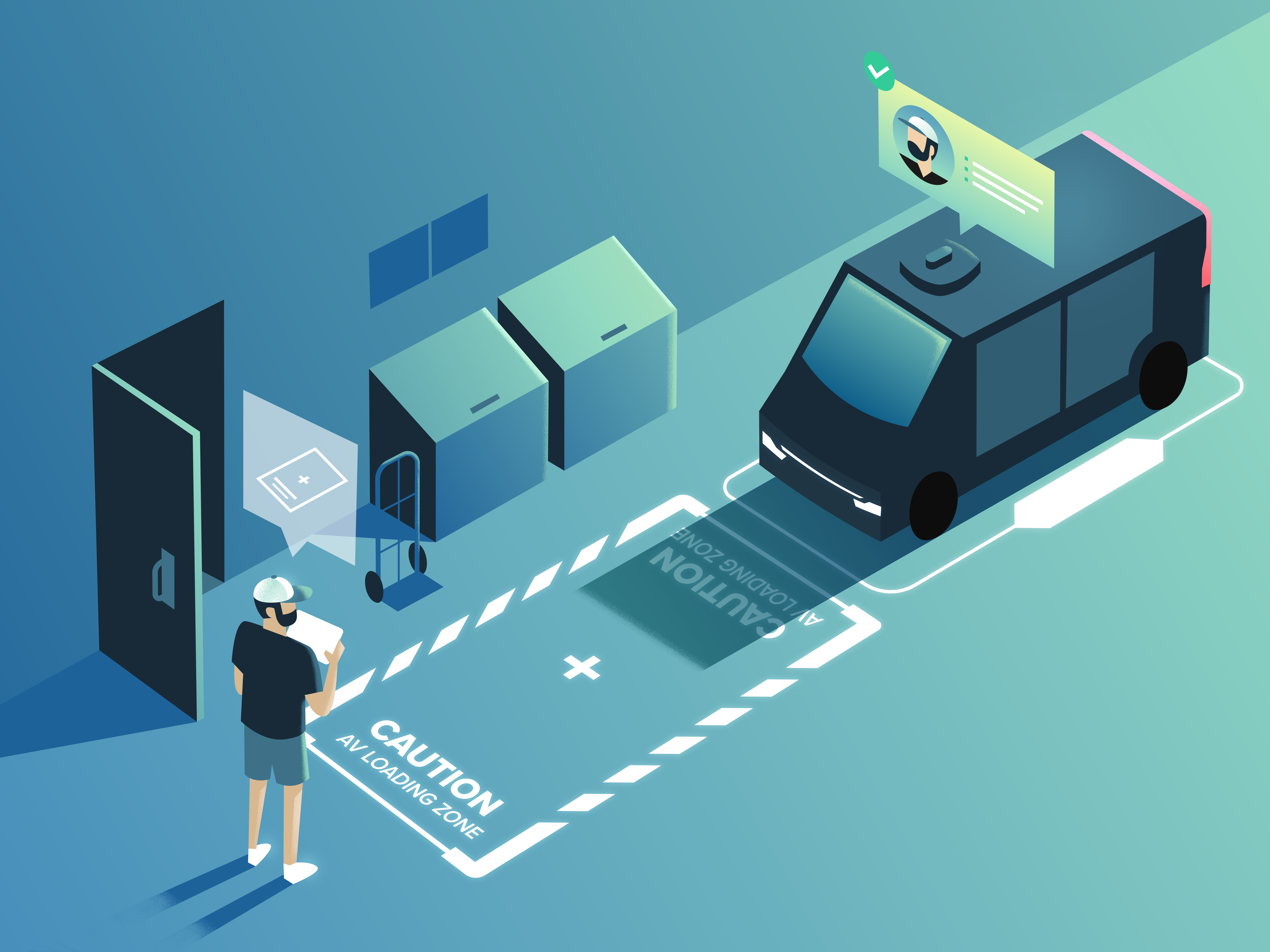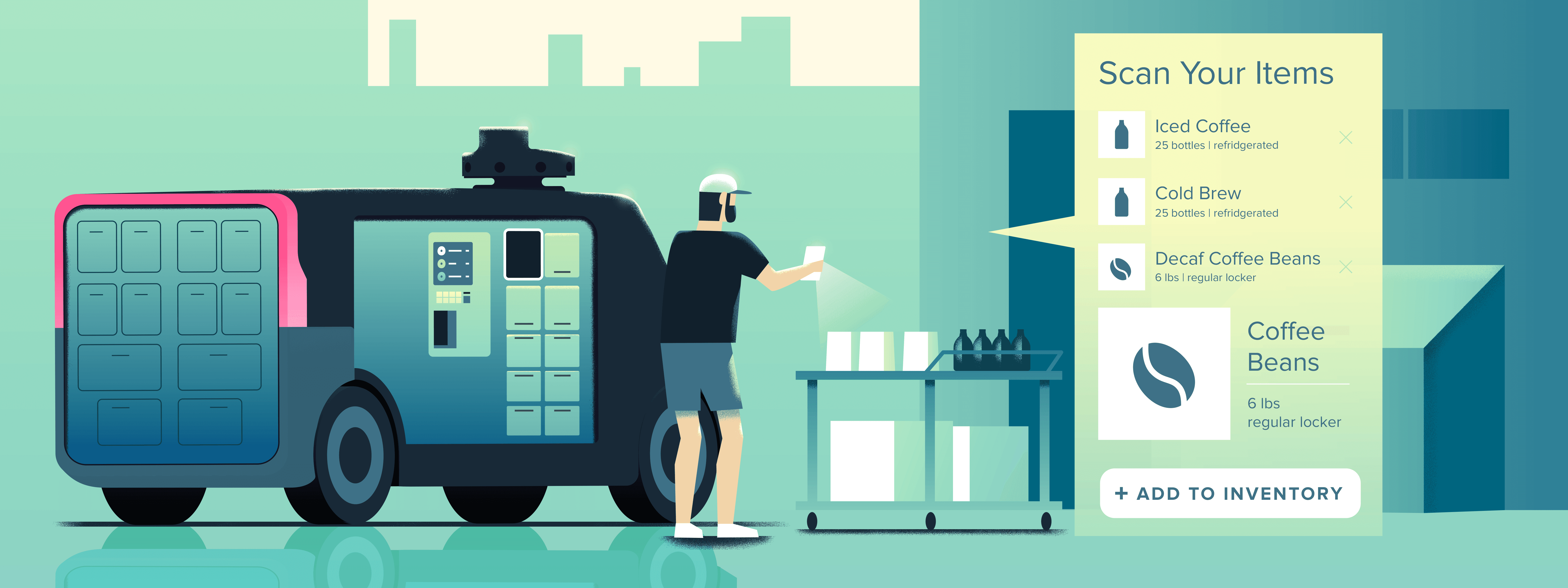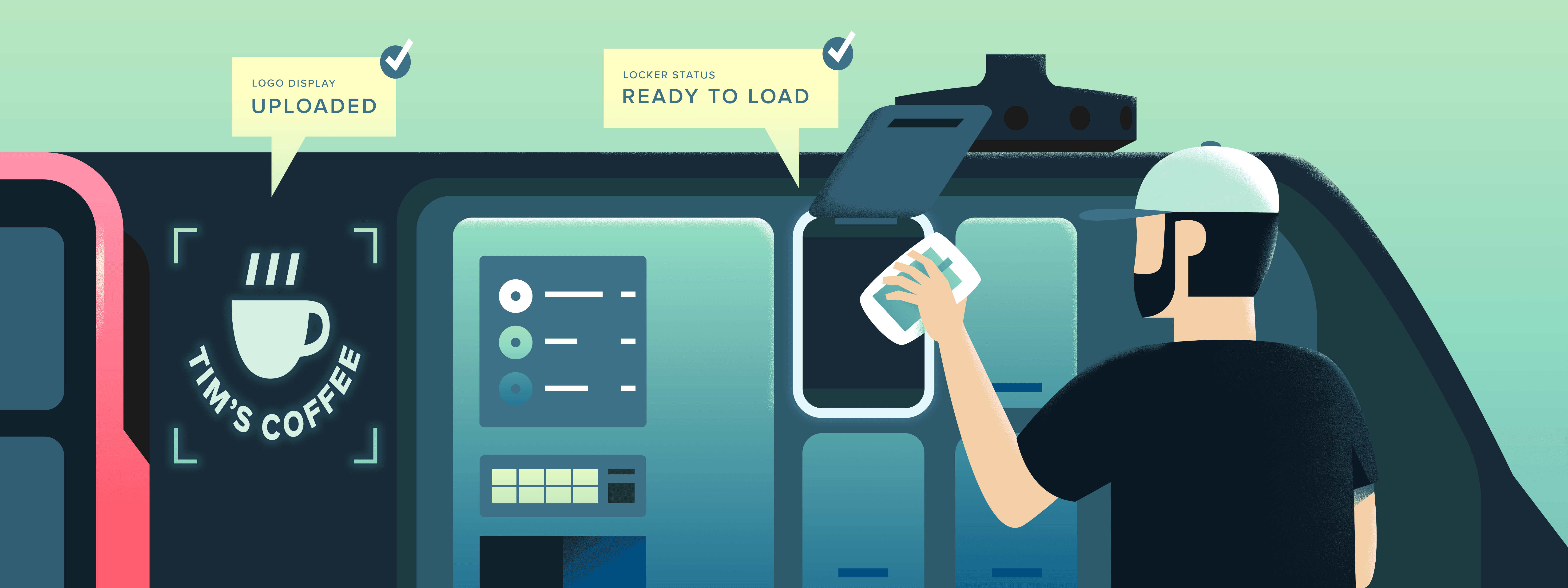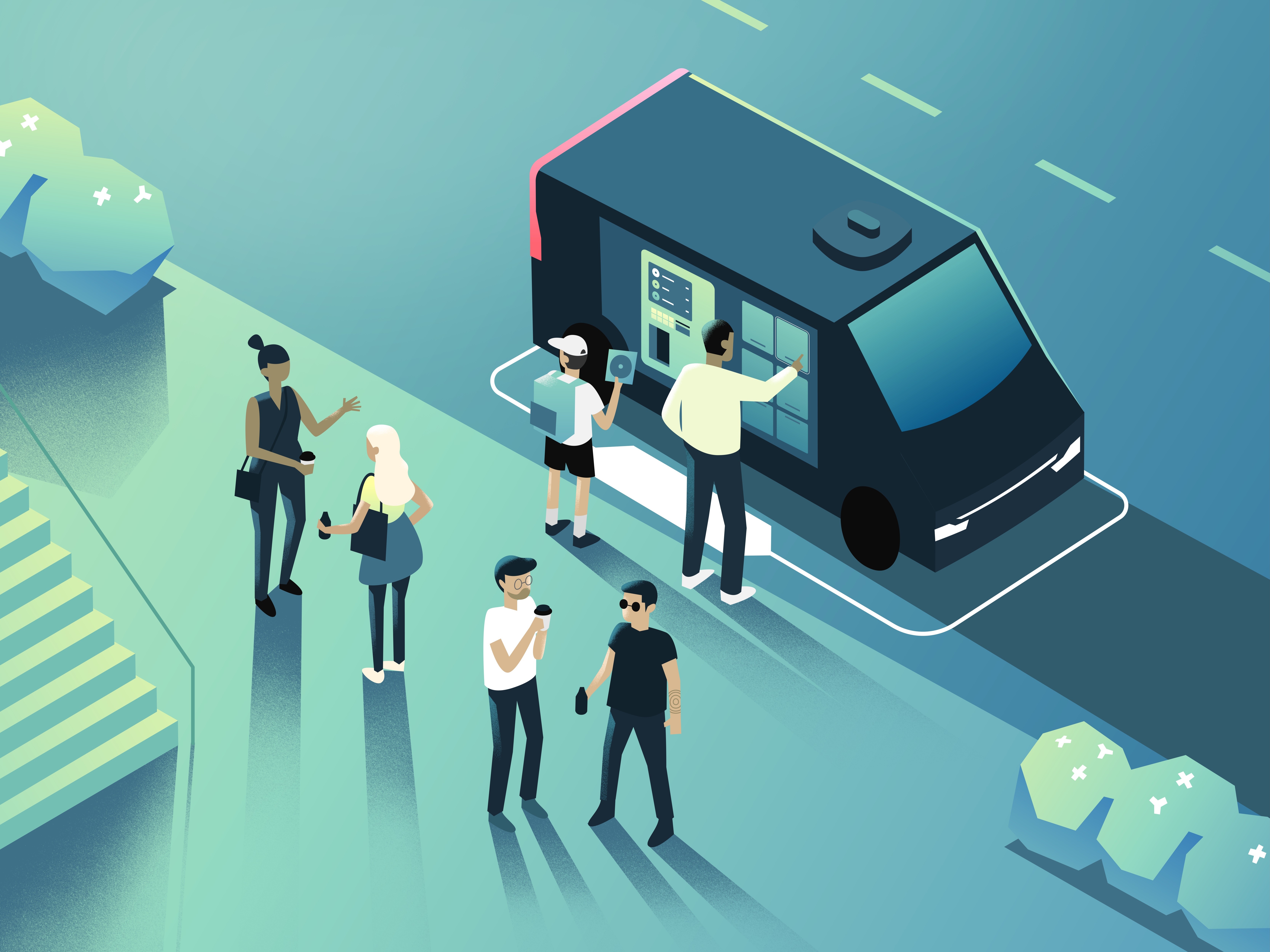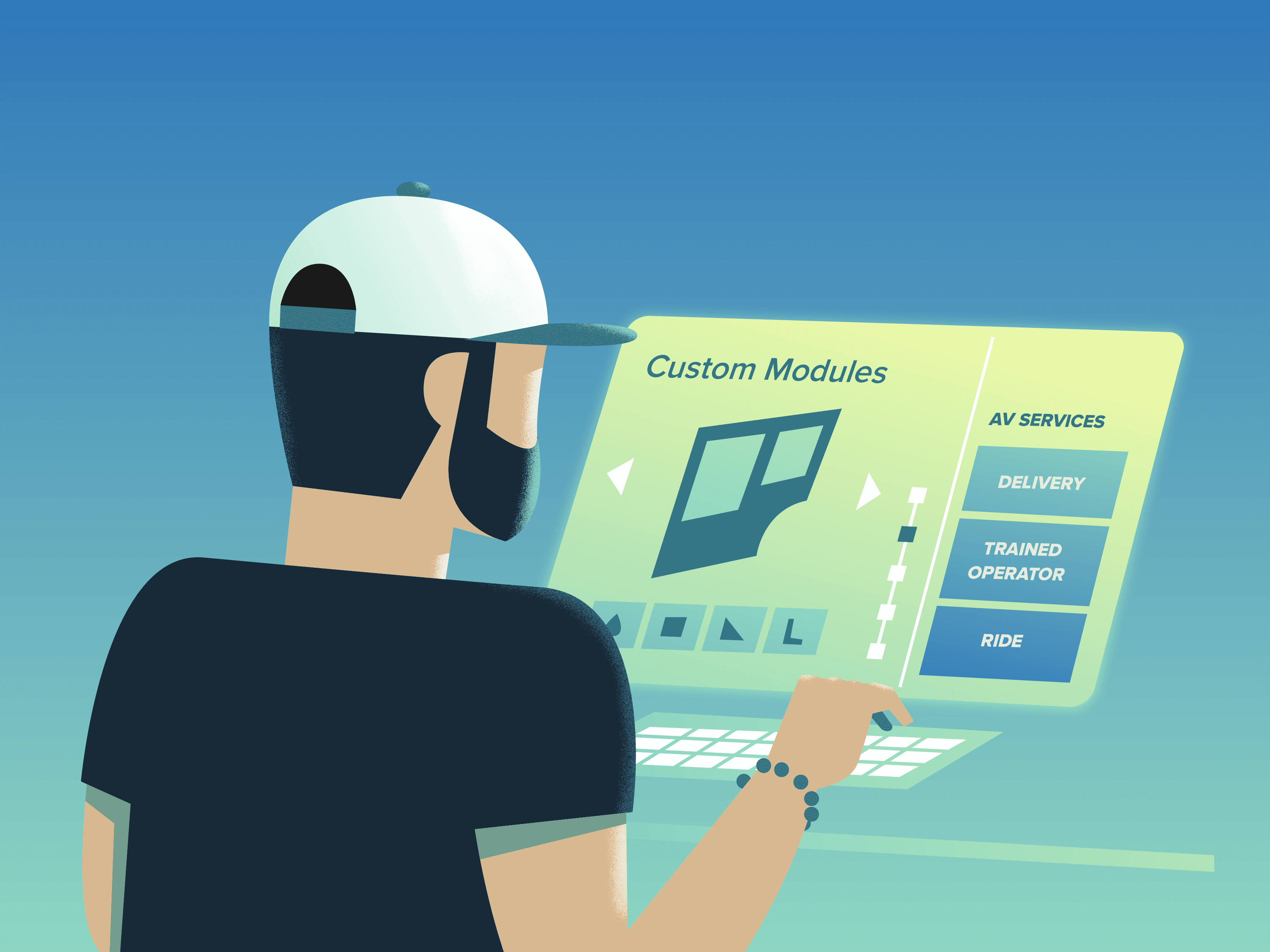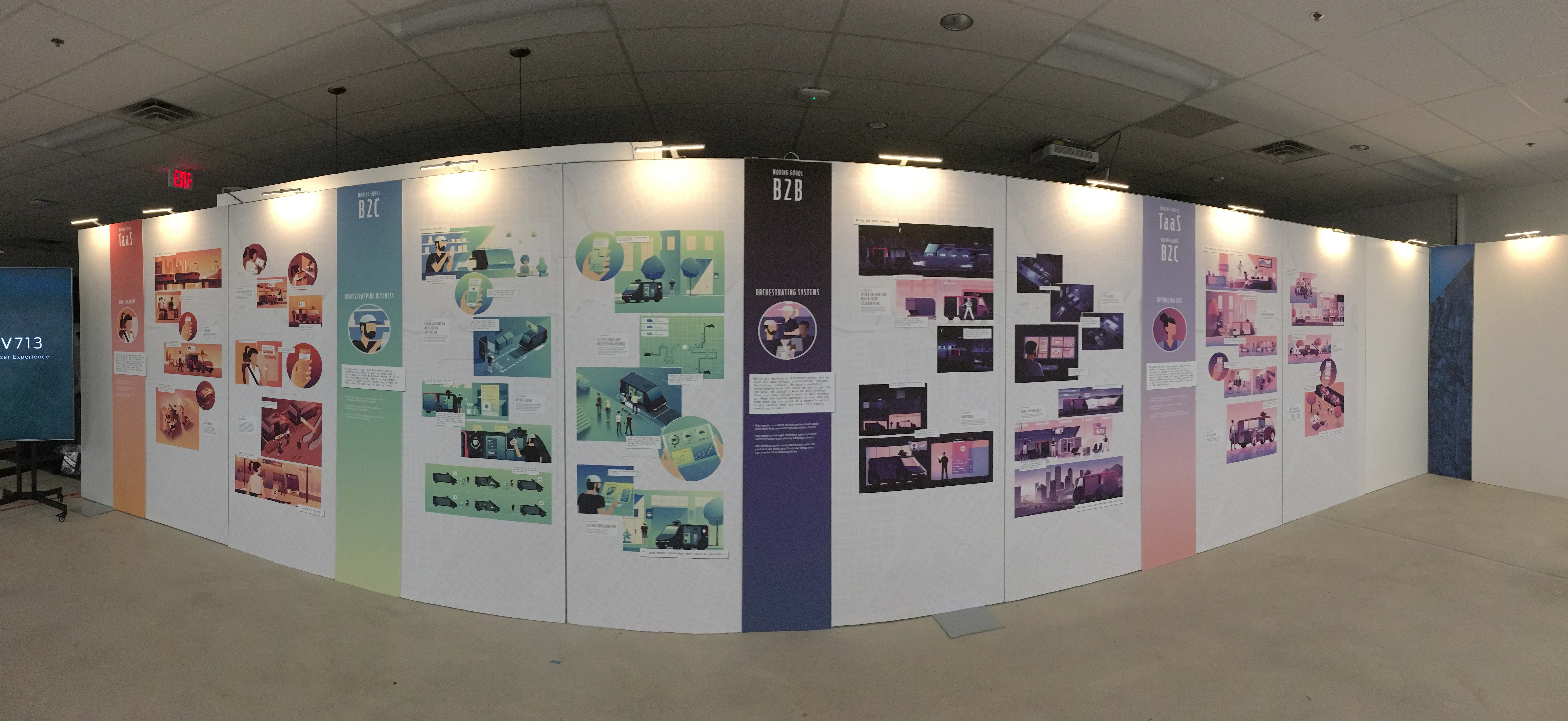
Client: Ford - Interaction Design
In 2017 Ford began planning their first autonomous vehicle, a modified version of a popular van product that could serve both moving people around a city and providing services. We were tasked with defining the key features for this vehicle and how it could develop in the near and far term.
My Role
I led interaction design on this project, designing user journeys, digital interfaces, and animating interactions on vehicle prototypes.
Challenge
We were tasked with creating a vision for Ford's first autonomous vehicle, focused on moving people, goods, and services.
Solution
We visualized 4 distinct user journeys, and vehicle features that would allow people to have intuitive experiences with their first autonomous vehicles.
Existing Vehicle Research
Ford planned to use an existing popular vehicle platform to build the AV capabilities into. We spent the beginning of the project getting comfortable with the form factor and space it would allow.
Initial Sketches & Prototypes
Stakeholder Workshops
Optimising Life
Nimble Commute
Orchestrating Systems
Bootstrapping Business
The Handshake
The Sendoff
Cargo Delivery
If the AV is upfitted for delivering goods, the external communication can help signal the state it is in to traffic, aswell as help the user identify where to pull their package.
External Collaboration


